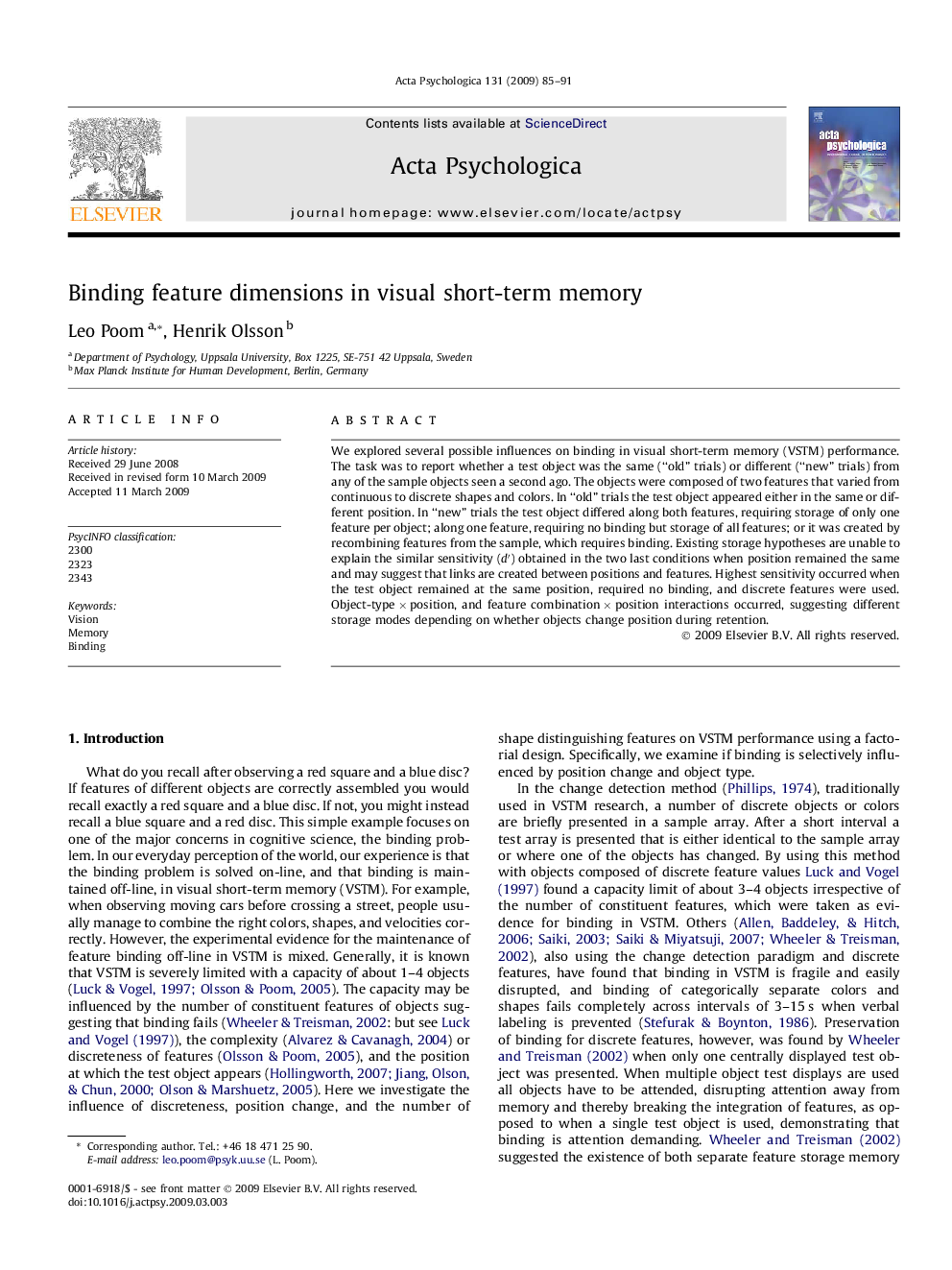| Article ID | Journal | Published Year | Pages | File Type |
|---|---|---|---|---|
| 920339 | Acta Psychologica | 2009 | 7 Pages |
We explored several possible influences on binding in visual short-term memory (VSTM) performance. The task was to report whether a test object was the same (“old” trials) or different (“new” trials) from any of the sample objects seen a second ago. The objects were composed of two features that varied from continuous to discrete shapes and colors. In “old” trials the test object appeared either in the same or different position. In “new” trials the test object differed along both features, requiring storage of only one feature per object; along one feature, requiring no binding but storage of all features; or it was created by recombining features from the sample, which requires binding. Existing storage hypotheses are unable to explain the similar sensitivity (d′) obtained in the two last conditions when position remained the same and may suggest that links are created between positions and features. Highest sensitivity occurred when the test object remained at the same position, required no binding, and discrete features were used. Object-type × position, and feature combination × position interactions occurred, suggesting different storage modes depending on whether objects change position during retention.
